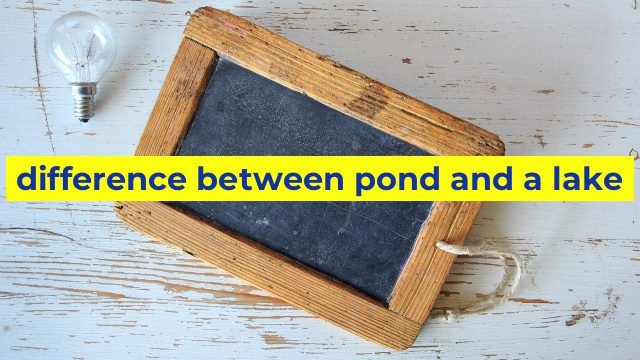The Difference Between a Pond and a Lake
From the outside, ponds and lakes may seem like similar bodies of water. They both provide habitats for aquatic life and can be used for recreational activities. However, there are some differences that set them apart. In this article, we will discuss the differences between a pond and a lake.
Size and Depth
One of the most significant differences between a pond and a lake is their size and depth. Generally, ponds are smaller and shallower than lakes. Ponds are typically around 2 acres or less, while lakes can range from 3 acres to over 1,000 acres in size. Similarly, ponds are typically less than 15 feet deep, while lakes can be as deep as 200 feet or more.
Origin
Ponds and lakes can also differ in their origin. Ponds are usually formed naturally, by events such as glacier movements or soil erosion. They can also be created artificially by humans, for example, to provide habitats for fish or as ornamental features in gardens. Lakes, on the other hand, are generally formed naturally and tend to be much older than ponds. They are usually created by geological events such as volcanic activity or from glacier movements.
Water Movement
Another difference between ponds and lakes is how they interact with water movement. Ponds often have low or no water flow, as they are usually fed by rainfall or small streams. Lakes, on the other hand, have more significant water movement due to their size and depth. They can receive water not only from streams and rainfall but also from rivers and underground springs.
Ecology
The ecology of ponds and lakes can also vary. Ponds tend to have simpler ecosystems due to their smaller size and lower water movement. They are more susceptible to changes in water quality, which can cause imbalances in the aquatic life they support. In contrast, lakes can have more complex ecosystems with a wider variety of species. They also tend to be less susceptible to water quality changes.
In conclusion, while ponds and lakes may seem similar, they have several key differences. Ponds are typically smaller, shallower, and have lower water movement, while lakes are larger, deeper, and have more significant water movement. Additionally, ponds tend to be simpler ecosystems and are more susceptible to changes in water quality. Understanding these differences can help us appreciate these bodies of water better and contribute to their conservation.
Table difference between pond and a lake
| Characteristic | Pond | Lake |
|---|---|---|
| Size | Small | Large |
| Depth | Shallow | Deep |
| Water Source | Spring, runoff or groundwater | Stream or river |
| Surroundings and Environment | More likely to be surrounded by trees, smaller in size, and more likely to be located in residential or agricultural areas. | More likely to be in a wilderness area, covered by mountains, and used for recreational activities such as boating or fishing. |
| Biodiversity | Usually has fewer species of plants and animals. | Has more diverse plant and animal life. |


